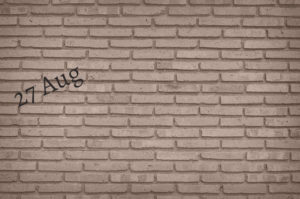How to Check Plastering Work Quality (Checklist)
Plastering is a process of covering the walls and ceiling with a smooth finish by any type of plaster materials (Cement, POP etc).
The below plastering work checklist and procedure will be useful for any type plastering work.
Mục lục
Pre-plaster inspection checklist
- Ensure all the checks ( Brickwork Checklist ) after block work is completed.

- The aluminum template for openings (sometimes we use sand to cover the electric holes) should be available at the site.
- The blockwork should have been cured for 7 days and dry before plastering is started.
- Fix button mark on the surface to be plastered keeping the minimum thickness. 12mm plaster is the desired thickness. The distance of button marks should be within an aluminum straight edge length.
- Plastering mesh should be 8” wide and fixed rigidly before plastering on the junction (between concrete and masonry surface) with steel nails / wooden plug and nails. This strip has to be plastered and cured for a minimum of 3 days before the entire wall is plastered.
- Get the plastering specifications like lime finish, trowel finish, sponge finish, rough plaster and zone of application clarified from architects.
- Do not plaster for a thickness of more than 15mm. In case it is required, the plastering should be done in 2 coats. The first layer applied should be cured for a day before applying the subsequent coats.
- The cement within 90 days old ( Reason ), Sand – fine silt content low (<6%) and potable water should be used for mixing mortar.
- All surfaces in concrete should be hacked (80 hacks per SQ. ft) before plastering.
Checks during Plastering

- All surfaces to be plastered must be wet to prevent absorption of water from plaster.
- Mix shall be generally CM 1:4 for ceiling and 1:6 for wall plastering.
- Mix mortar on MS sheet using Measuring Box (Farma) for volumetric batching.
- Mix thoroughly for uniform mix and the mortar should be used within ½ to 1 hour of the mix.
- After plastering check the surface for undulations using halogen lamps. Yellow light is thrown on the plastered wall from one side shows undulations, if any, rectify immediately while the plaster is still fresh. All cut-outs such as fan, junction box, electrical box and skirting line should be finished to perfection.
- Grooves and mortar bands should be given while the plaster is wet.
- If lime rendering is required, do it within 3 to 4 hour of the setting of cement mortar after plastering.
- Write down the date of work in the paint on the element for plastering, concrete & monitor the curing accordingly.
Internal Plaster
- Check for smooth finish using spirit levels for undulations, cracks and evenness/straightness in vertical and horizontal directions.
- Ensure plastered surface is cured for the entire recommended period.
- Ensure the 1-meter level markings are made along all walls. Measure the ceiling from this level – it should be even at all points. [Check for ceiling plaster]
- Ensure plastering thickness is even at all points during plastering.
- Ensure the button marking tiles are removed.
External Plaster
- Ensure availability of specialized trowels to obtain different structural finishes for the external plastering.
- Check for undulations and unevenness by using spirit levels.
- Ensure all plastered surfaces are cured for the entire recommended period.
Care to be Taken After Plastering
- Cure the works for a minimum of 10 days. Write the date of plastering on the wall/ceiling with a permanent marker. (So you can track the curing days).
- All mortar waste stuck to walls, floor, and MS sheet shall be cleared after the day’s work.
Plastering Work Checklist Format
We have added basic Plastering Checklist Format[themify_icon icon=”fa-external-link” ]. You can edit this format according to your needs.
Hope you enjoyed this article. Help us to share this 🙂






